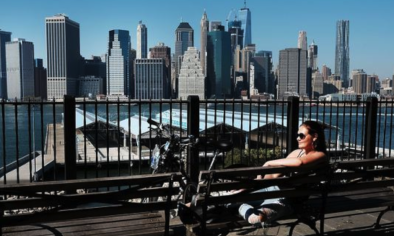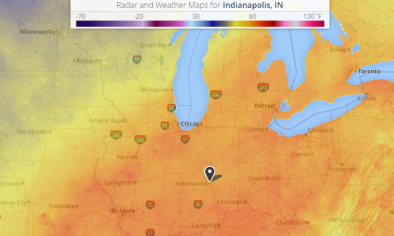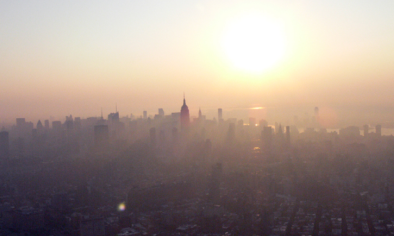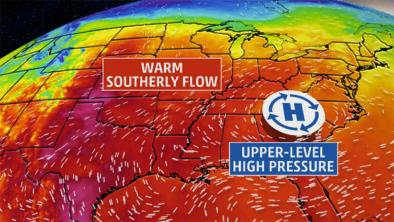Mid-autumn heat wave may be the new normal, but not just for the reason you may expect

For the third straight day, the tri-state saw high temperature records shatter.
One cause of the weather being unseasonably warm, according to some experts, is the seasons actually shifting from their normally expected times in the calendar. The reason for that, in turn, may not exclusively be the reason most often cited for unusual seasonal weather patterns.
...
At 87 degrees, Newark topped the list of local National Weather Service records. The list included Laguardia Airport at 86 degrees, as well as two other nearby airports, JFK and MacArthur in Islip, Long Island. Both of them reached highs of 84 degrees.
Those are normal high temperatures for mid- to late June, not mid- to late October. A long-range meteorologist is among weather professionals worldwide who have concluded that the summer-like conditions this late in the year are a new reality.
"Our ocean and atmospheric patterns have have shifted fundamentally our Eastern U.S. [seasonal] patterns by about five to six weeks," said Michael Schlacter, CEO of Weather2000, a long-range forecasting company that he founded. "Which means," Schlacter continued, "that summer is June through September, with a spillover into October. Fall is November and December, and winter is January into April, with some wintry conditions extending even into May."
So a shift in seasons could be the cause for the record breaking 85-degree heat in Central Park on Wednesday. The cause of that was described similarly by a variety of people PIX11 News encountered in Central Park.
"It's all that global warming business," said Rochelle Nash, who was walking into the park with her two daughters and son.
Another park visitor, Nasim Khalifeh, echoed that assessment. "It should be autumn," she told PIX11 News, "it should not be summer. It's global warming, I guess."
While climate change could be a factor in the seasonal shift, said Schlacter, he does not see it being the main culprit.
"We also have atmospheric and ocean cycles that occur in 20, 30, 50 year intervals," said Schlacter, explaining how seasonal shifts can happen for long stretches at a time.
"Another connection that we've seen," Schlacter said, "is similar to the 1950s. We've had a lot of tropical storms this decade be steered and geared toward the East Coast and even the Northeast."
He said that big named storms of the last few years, such as Irene, Sandy, Hermine and Matthew fit a pattern of tropical conditions that have affected the autumn. In other words, said Schlacter, periods of very warm weather in October and even beyond are something people should start getting used to.
Related Content






